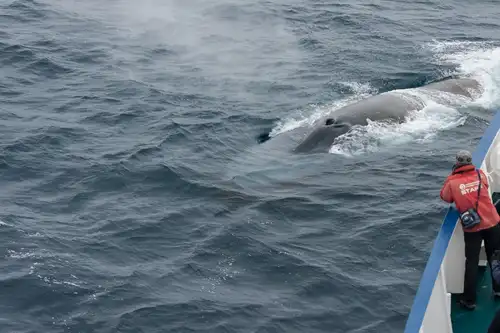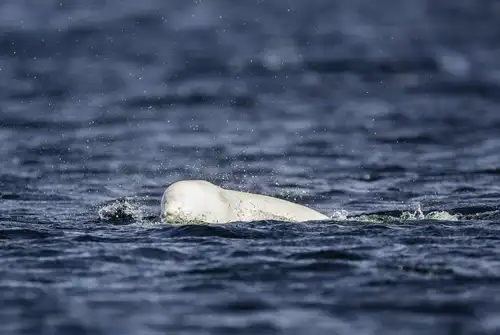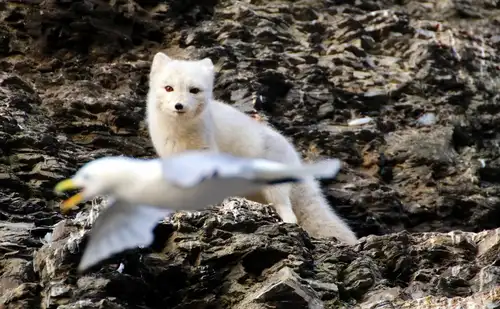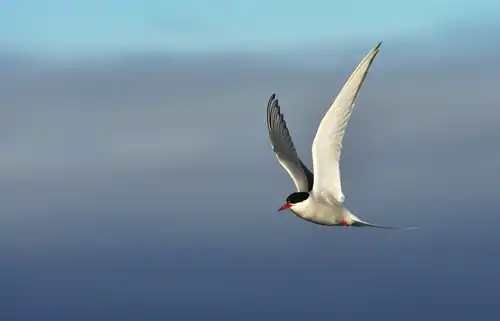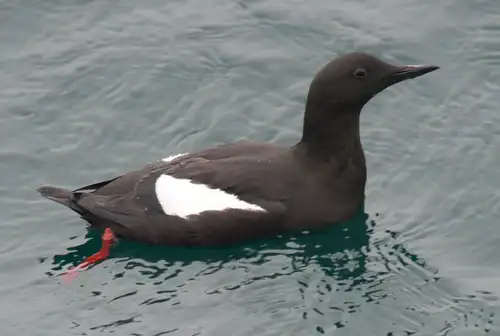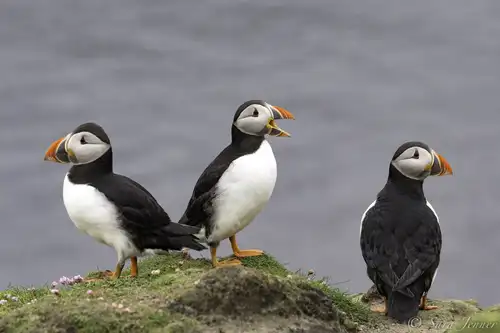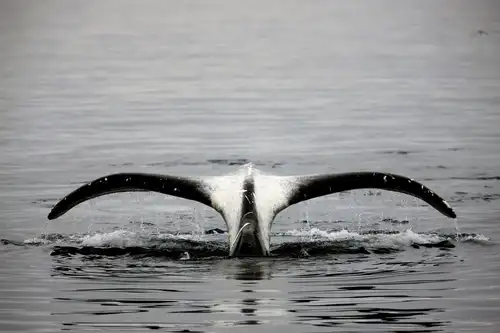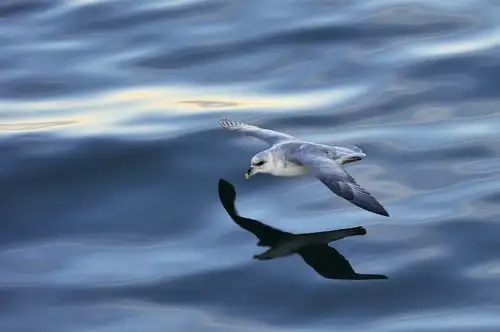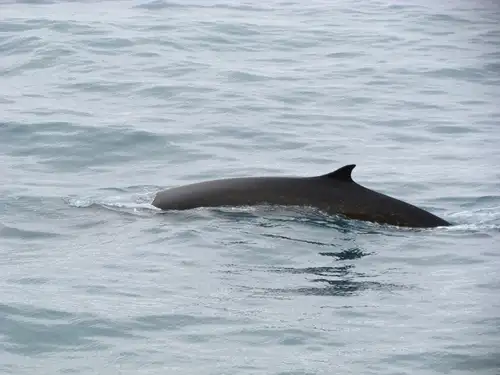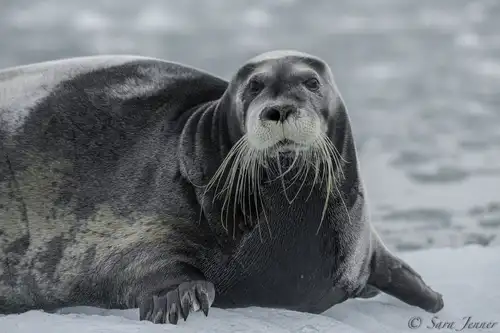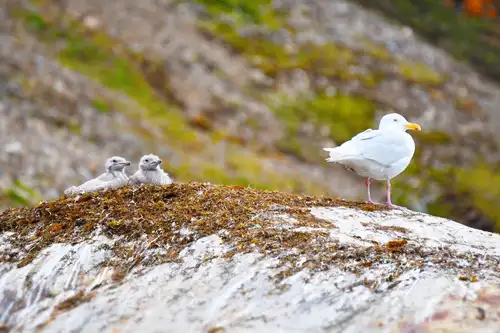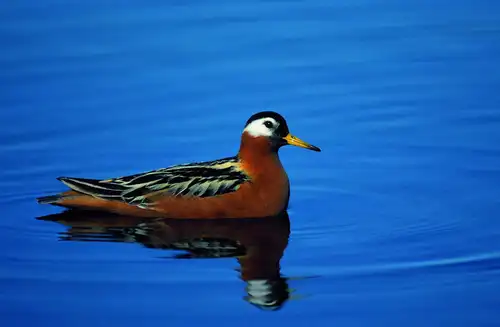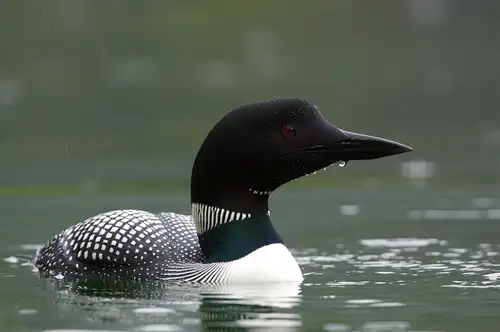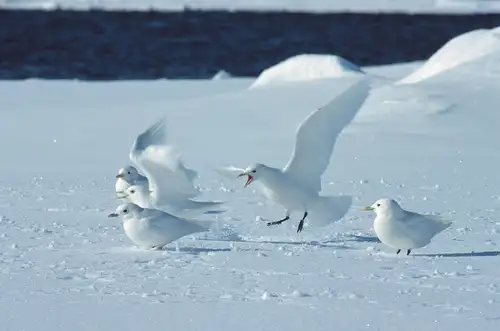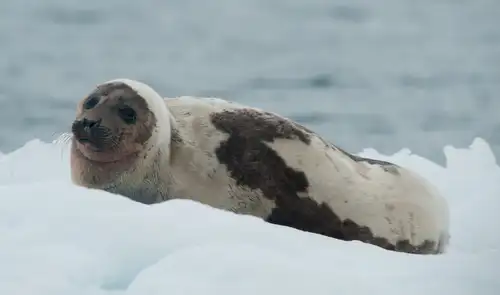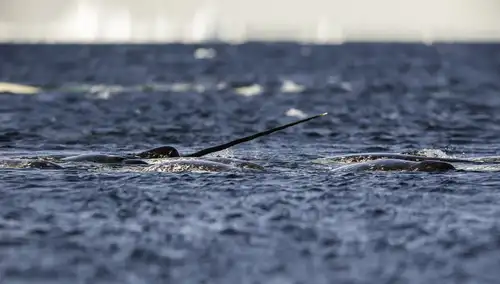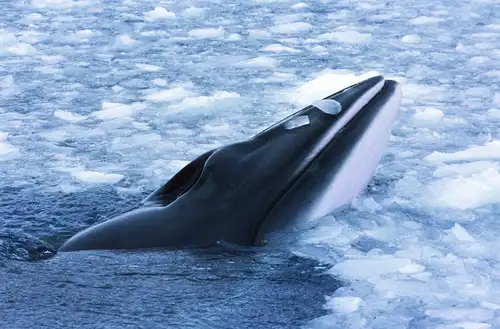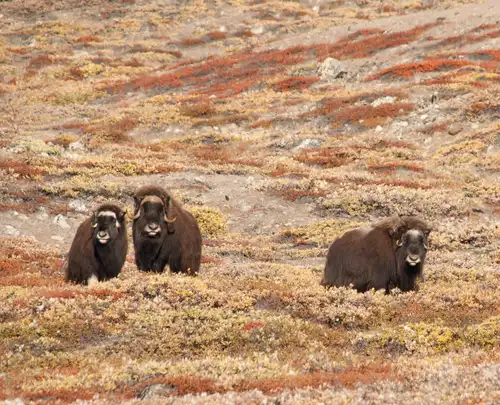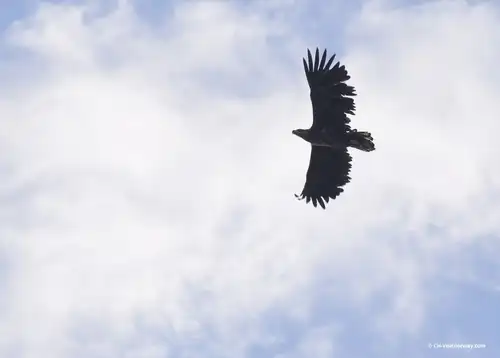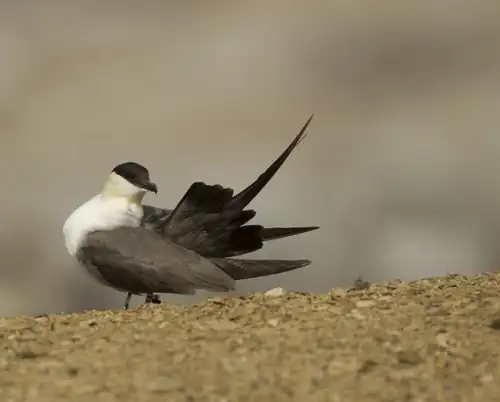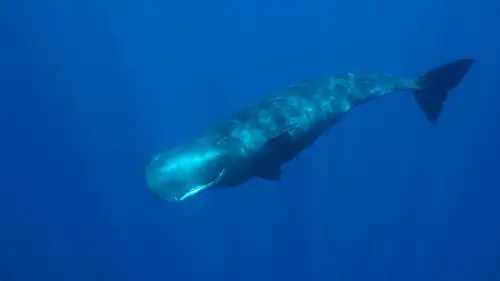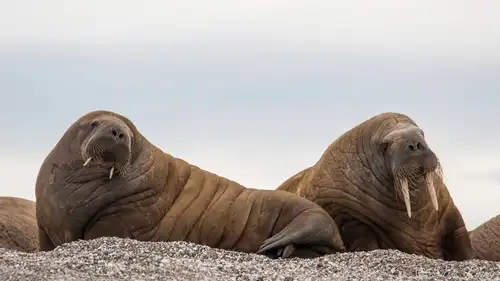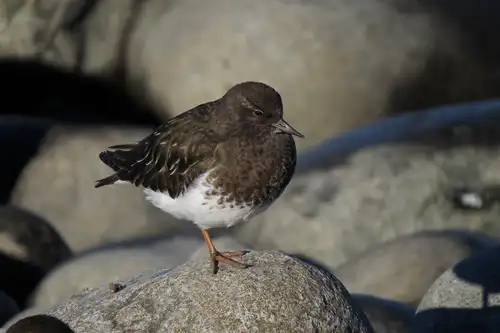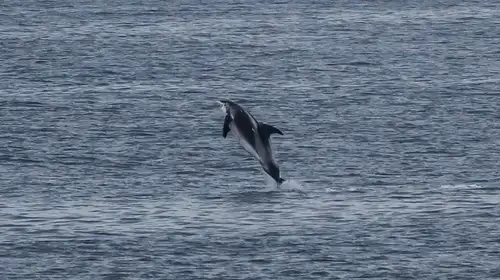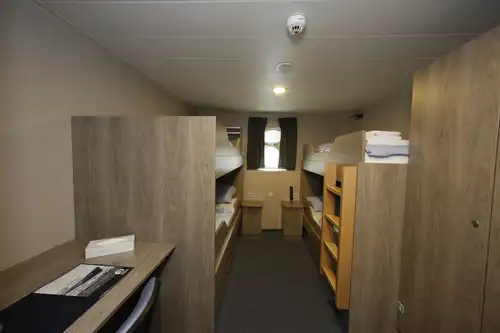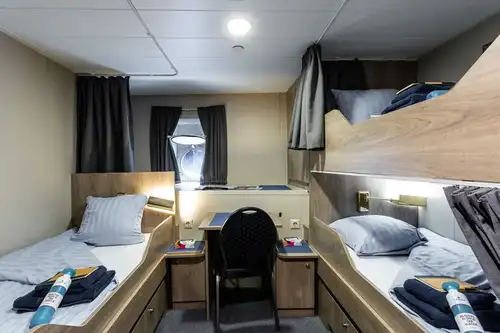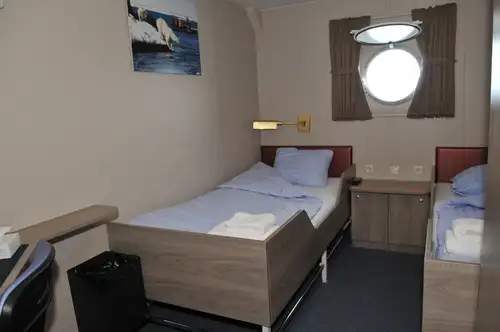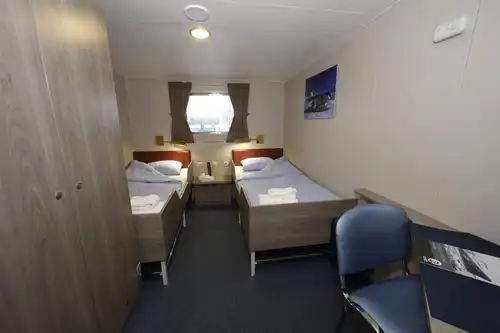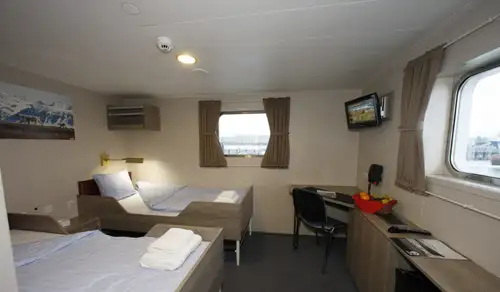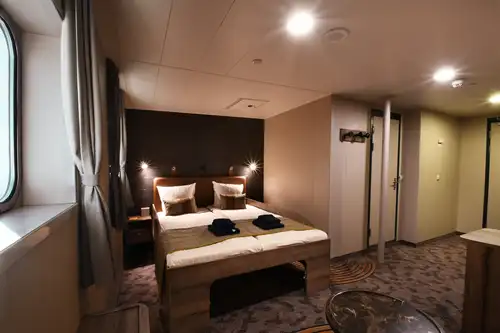Price start from :
$
12,920
Contact Us
 30 Days/29 Nights
30 Days/29 Nights
Description
Highlights You Might Experience
Cabins and Pricing
Quadruple Porthole
2 upper & lower berths







Complete Cabin




USD
64600 USD
51680 Price for the complete cabin, fully occupied.
Sharing Cabin




USD
16150 USD
12920 Share your cabin with others for the best price.
Triple Porthole
1 upper berth & 2 lower berths



Complete Cabin



USD
68100 USD
54480 Price for the complete cabin, fully occupied.
Sharing Cabin



USD
22700 USD
18160 Share your cabin with others for the best price.
Twin Porthole
2 lower berths






Complete Cabin


USD
45400 USD
36320 Price for the complete cabin, fully occupied.
Single Cabin


USD
38590 USD
30872 Price for the complete cabin occupied by 1 person (1.7x the shared rate).
Sharing Cabin


USD
22700 USD
18160 Share your cabin with others for the best price.
Twin Window
2 lower berths






Complete Cabin


USD
49300 USD
39440 Price for the complete cabin, fully occupied.
Single Cabin


USD
41905 USD
33524 Price for the complete cabin occupied by 1 person (1.7x the shared rate).
Sharing Cabin


USD
24650 USD
19720 Share your cabin with others for the best price.
Twin Deluxe
2 lower berths






Complete Cabin


USD
52300 USD
41840 Price for the complete cabin, fully occupied.
Single Cabin


USD
44455 USD
35564 Price for the complete cabin occupied by 1 person (1.7x the shared rate).
Sharing Cabin


USD
26150 USD
20920 Share your cabin with others for the best price.
Superior
1 double bed, 1 sofa bed









Complete Cabin


USD
58800 USD
47040 Price for the complete cabin, fully occupied.
Sharing Cabin


USD
29400 USD
23520 Share your cabin with others for the best price.
Map

IMPORTANT
EXCLUDED
INCLUDED
- Flights to the embarkation point and from the disembarkation point.
- Pre- and post- land arrangements.
- Passport and visa expenses.
- Meals ashore.
- Personal health Insurance for Medical, Accident and Repatriation/Evacuating.
- All personal expenses, including but not limited to laundry services, bar beverages, and excess internet usage charges.
- The customary gratuity at the end of the voyages for stewards and other service personnel aboard (guidelines will be provided).
- Voyage aboard the indicated vessel
- All meals throughout the voyage aboard the ship including snacks, coffee and tea.
- All shore excursions and activities throughout the voyage by Zodiac.
- Program of lectures by noted naturalists and leadership by experienced expedition staff.
- Free use of rubber boots and snowshoes.
- Transfers and baggage handling between the airport, hotels and ship only for those passengers on the group flights to and from Longyearbyen.
- All miscellaneous service taxes and port charges throughout the programme.
- AECO fees and governmental taxes.
- Comprehensive pre-departure material.
FAQ
Can I watch movies, TV shows, or any other such content on the ship?
- Yes, we have an onboard entertainment system that gives you access to movies and series as well as information about our menus, daily activities, and related trip information. Just connect to the vessel's Wi-Fi, click on the link or scan the QR code, and search for media at your leisure.
What would be the longest delay for medical attention during an Arctic trip?
- In Svalbard, a medevac is usually not more than a few hours away. In East Greenland, an evacuation via a remote airfield or to the hospital in Ittoqqortoormiit could take 1-3 days. All scenarios are highly weather dependent. It is therefore obligatory to acquire a travel insurance that also includes coverage for medical repatriation costs and evacuation by helicopter, plane, or ship. After the booking process, you will be asked to provide us with details of your acquired insurance policy. If you are in poor health or in doubt, please consult your physician for a check-up. All passengers need to be healthy enough to travel to remote places with limited or no medical facilities. On our motor vessels, we sail with a qualified physician at all times. The infirmary on board our motor vessels is only suited for first-aid care, however, and on our sailing vessel we have no doctor or medical facility.
Can I get a cash advance on board the ship?
- No, you are not able to get cash advances on the vessel.
What forms of payment do you accept when making a reservation?
- We accept payment via bank transfer, Wise or credit card (Mastercard and Visa). When paying with a credit card, we have to pass on a credit card fee.
What is the temperature and weather like in Greenland?
- The size of Greenland creates a diverse range of temperature and climate conditions. For example, the populated sections of Greenland are all found on the coast because this area is free of ice. Meanwhile, the central region of Greenland is covered by an ice sheet. In Nuuk, the average winter temperature reaches as low as -8 degrees Celsius (18 degrees Fahrenheit), but this climbs up to 7 degrees Celsius (45 degrees Fahrenheit) in the summer. The area only rarely experiences any temperatures that go above this range, which makes the summer cool but renders the winter more tolerable than many regions that have a more variable climate.
What does the surface of Greenland look like?
- Huge outlet glaciers slowly slide down the mountains towards the sea where the ice breaks of and creates the huge cathedral like icebergs that are so abundant in the Greenlandic waters.
When was the Plancius built?
- The ship Plancius was built in 1976 as an oceanographic research vessel for the Royal Dutch Navy.
How many people can travel on board the Plancius?
- There is place for 116 passengers aboard the Plancius. Furthermore there are 45 staff & crew on board : 17 nautical crew, 19 hotel staff (6 chefs, 1 hotel manager, 1 steward-barman and 11 stewards/cabin cleaners), 7 or 8 expedition staff and 1 doctor on board.
❮
❯
You May Also Like


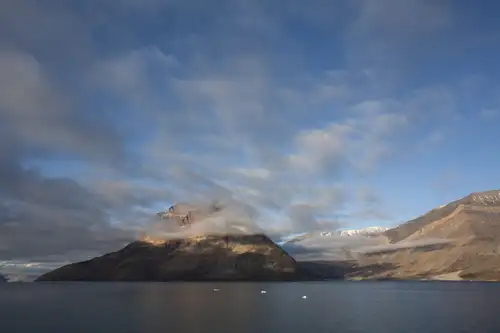
Arctic
Longyearbyen
East and South Greenland Explorer, Incl. flight from Narsarsuaq to Copenhagen
 21 Days / 20 Nights
21 Days / 20 Nights
From $ 11.000 per person
% Save up to $ 5.880

Arctic
Longyearbyen
Ultimate East and South Greenland Discovery
 30 Days / 29 Nights
30 Days / 29 Nights
From $ 12.920 per person

Arctic
Longyearbyen
Spitsbergen - Northeast Greenland - Aurora Borealis, Including Long Hikes
 14 Days / 13 Nights
14 Days / 13 Nights
From $ 7.450 per person
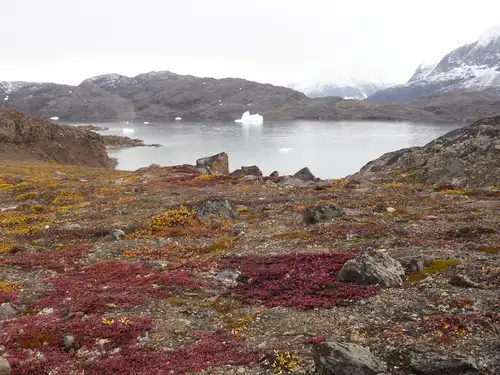
Arctic
Akureyri
East Greenland, Scoresby Sund - Aurora Borealis, Including Long Hikes
 10 Days / 9 Nights
10 Days / 9 Nights
From $ 5.650 per person
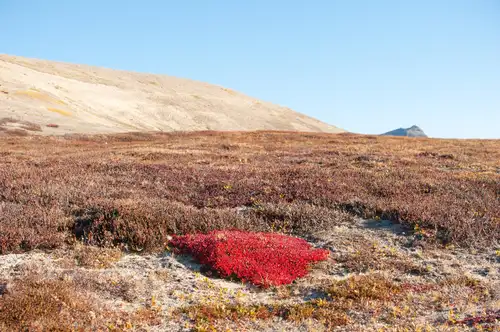
Arctic
Narsarsuaq
South Greenland Explorer, Aurora Borealis, Incl. flight from Copenhagen to Narsarsuaq
 10 Days / 9 Nights
10 Days / 9 Nights
From $ 5.150 per person
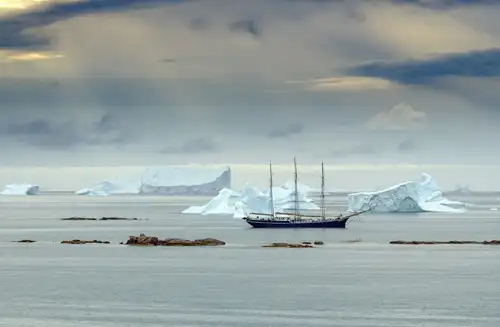
Arctic
Constable Pynt
East Greenland - Scoresby Sund - Iceland, Aurora Borealis, Fly & Sail
 12 Days / 11 Nights
12 Days / 11 Nights
From $ 5.900 per person

Arctic
Longyearbyen
Northeast Greenland Solar Eclipse Explorer Voyage
 14 Days / 13 Nights
14 Days / 13 Nights
From $ 8.550 per person

Arctic
Longyearbyen
Spitsbergen - Northeast Greenland, Fly & Sail
 20 Days / 19 Nights
20 Days / 19 Nights
From $ 9.350 per person
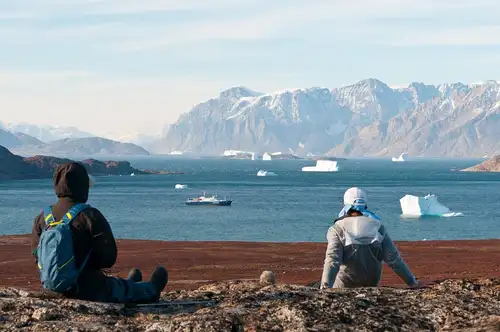
Arctic
Akureyri
Northeast Greenland Extreme
 14 Days / 13 Nights
14 Days / 13 Nights
From $ 8.550 per person

Arctic
Akureyri
East Greenland, Scoresby Sund, Including Long Hikes
 10 Days / 9 Nights
10 Days / 9 Nights
From $ 5.900 per person

Arctic
Akureyri
East & South Greenland Explorer – Aurora Borealis
 15 Days / 14 Nights
15 Days / 14 Nights
From $ 8.350 per person

Arctic
Constable Pynt
East Greenland, Scoresby Sund - Aurora Borealis, Fly & Sail
 11 Days / 10 Nights
11 Days / 10 Nights
From $ 6.150 per person

Arctic
Constable Pynt
East Greenland, Scoresby Sund - Iceland , Aurora Borealis, Fly & Sail
 12 Days / 11 Nights
12 Days / 11 Nights
From $ 6.200 per person
Blog


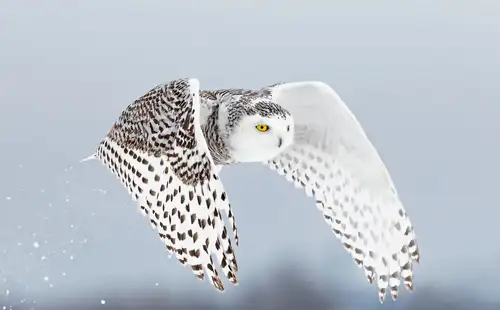
Blog
Secrets of the Snowy Owl: Habitat, Adaptations, and Other Facts
The snowy owl (Bubo scandiacus), also known as the great white owl or Arctic owl, is one of the most distinctive bird species on the planet. While you won’t find them in all areas of the Arctic – they don’t exist in Svalbard due to the lack of lemmings – snowy owls are seen in the polar regions of Eurasia and North America and are a potential visitor during Greenland cruises. The binomial species name, “scandiacus,” is derived from Scandinavia, as this is where the bird was first discovered. The snowy owl is the official bird of Quebec, and they are a must-see for countless bird watchers and naturalists.
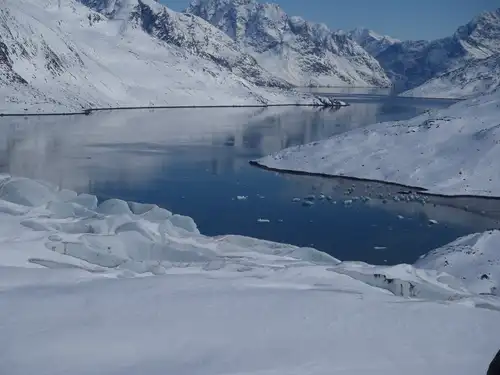
Blog
8 Scientific Wonders of the Arctic
The Arctic’s frozen landscape not only contains scenic gems, it also prompts fascinating advances in research. Here are some of the eight best.
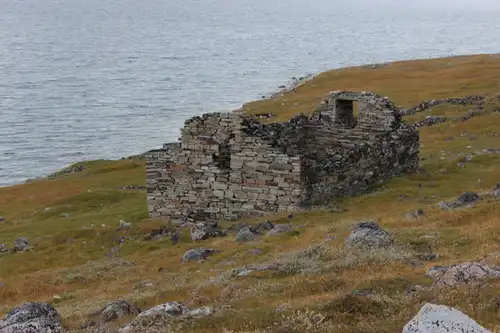
Blog
Greenland's History: When Vikings Ruled the Ice Age
A Greenland cruise offers a journey into a rich history filled with intriguing details that captivate polar expedition enthusiasts. Among the most fascinating historical aspects is the fact that Vikings once ruled this land. Anthropologists and climate scientists have long studied Greenland to pinpoint when and why the Vikings left. Recent findings have shed new light on this historical culture.

Blog
Arctic Foxes: Constant Gardeners of the Arctic
Given how widespread their habitat is, it is little wonder that Arctic foxes are one of the animals we most often see during our Greenland and Svalbard expeditions. The Arctic fox is a circumpolar species whose feeding grounds include North America, Eurasia, even Iceland, ranging from nearly the North Pole all the way down to the sub-Arctic islands.

Blog
Peaks, Fjords, and Auroras: 14 East Greenland Attractions
There really aren’t enough superlatives for East Greenland.
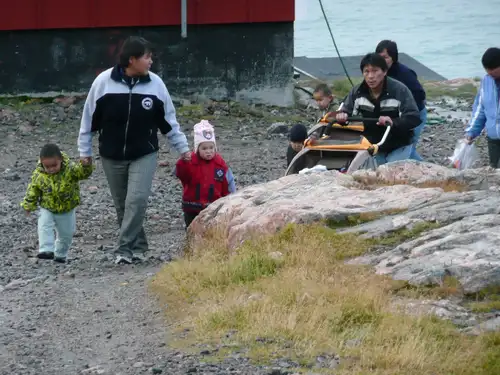
Blog
Greenlandic Inuit Beliefs
Greenland is the world’s largest island and with the northern tip around 740 kilometres from the North Pole it is the northernmost country on Earth. The island is around 2,670 kilometres long and is about 650 kilometres across at its widest point.
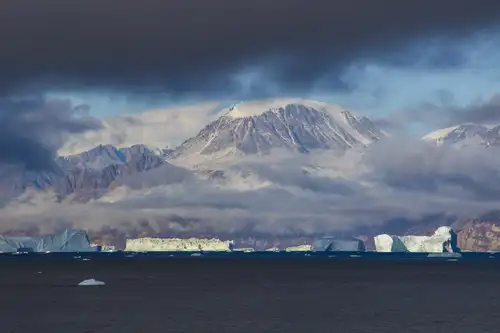
Blog
Greenland: East vs. West
East and West Greenland offer vastly different experiences due to their unique climates, wildlife, habitation, and geology.
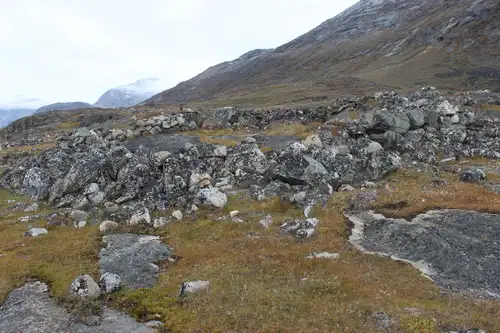
Blog
The Norse Settlement of Greenland
Erik the Red is a significant and vibrant figure in the history of the Norse Vikings. His story is primarily documented in the Icelandic Sagas Huaksbók (14th Century) and Skalhóltsbók (15th Century). These accounts offer slightly different versions of events that occurred 3-400 years earlier. The original saga of Erik the Red is believed to have been written around 1200 A.D., with the Skalhóltsbók version considered closest to the original. Additionally, Flateyjarbók (13th Century), which includes the Saga of the Greenlanders, is a crucial source for understanding the settlement of Greenland and the discovery of Vinland – North America.
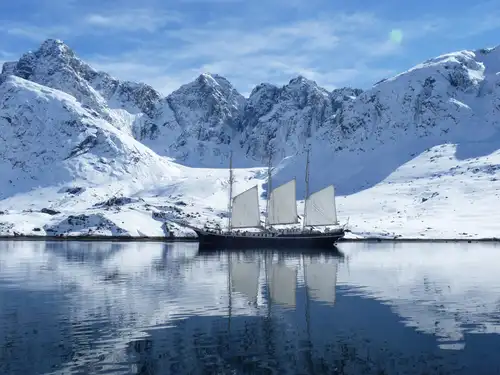
Blog
Why You Should Visit Greenland: 11 Things to See, Do, and Explore
There's nothing quite like witnessing your first Greenland glacier, navigating into the island's largest fjord system (which also happens to be Earth's largest), or observing a humpback whale breach over the dark Greenland Sea.
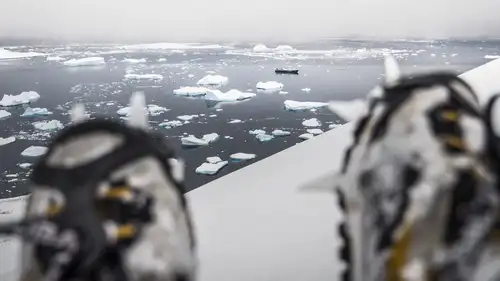
Blog
Arctic and Antarctic Basecamp Cruises – Choose Your Own Adventure
There’s an astonishing variety of activities to choose from when planning an Arctic trip or Antarctic cruise, which can be a bit overwhelming. How do you choose just one voyage over another when you want to experience everything? Happily, you don’t have to give up one activity for another. Basecamp cruises have you covered.
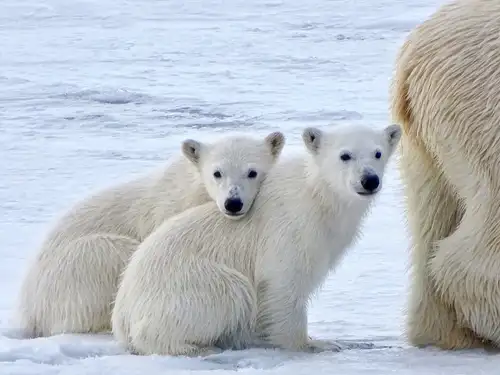
Blog
Where the Polar Bears Roam
Going to the Arctic without clapping eyes on a wild polar bear can be reasonably compared to visiting Africa without seeing a giraffe or a zebra or, most analogously, a lion.
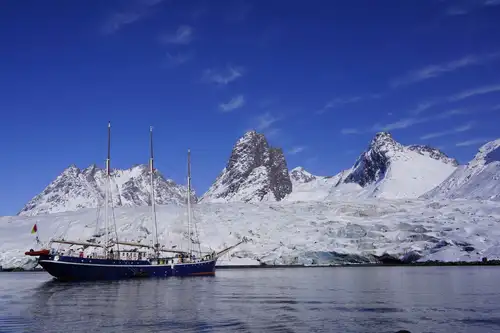
Blog
5 Misconceptions You Might Have About Greenland
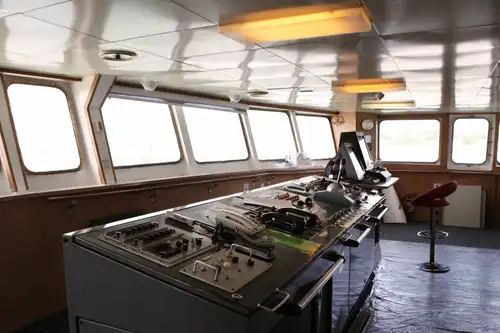
Blog
Navigating by touch through the sea ice
Ships are meant to glide effortlessly through calm waters, but our Greenland expedition vessel Ortelius is shuddering and wiggling as it navigates through the calm yet frozen waters between Svalbard and the islands. We’re on the North Atlantic Odyssey, a journey that starts in continental Europe and concludes near the North Pole in Svalbard. Onboard are 115 enthusiastic passengers. Most of them are currently on the outer decks, cameras in hand, captivated by the sea ice.
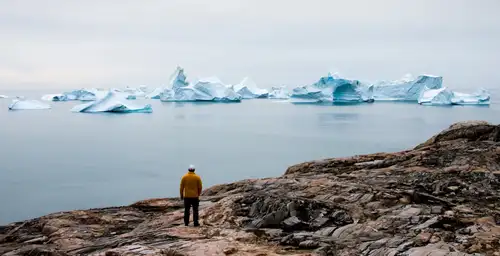
Blog
Tracking Greenland’s Wildlife from Space
Despite Greenland’s harsh environment, life has found a way to thrive there. If you’re lucky enough to embark on a Greenland cruise, you stand the chance of encountering many species of cold-adapted mammals, birds, and fish.
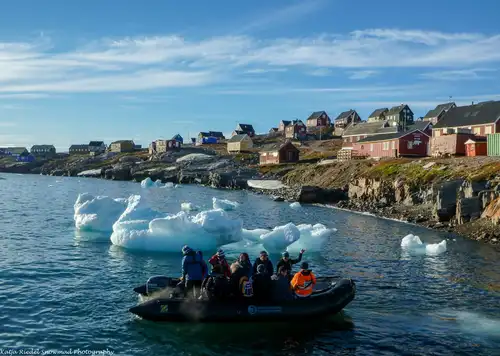
Blog
Scoresby Sund: the Greatest Greenland Adventure
In a land of expansive mountains, colossal glaciers, and majestic shorelines, few places are as expansive, colossal, or majestic as Scoresby Sund.

Blog
Not Eskimos: 10 Enlightening Facts About the Inuit
If you are planning to join an Arctic cruise, you might be intrigued by the Inuit culture. To help you gain a deeper understanding of these people, especially if you are considering a trip to Greenland, here are 10 fascinating facts about the Inuit that everyone should know.
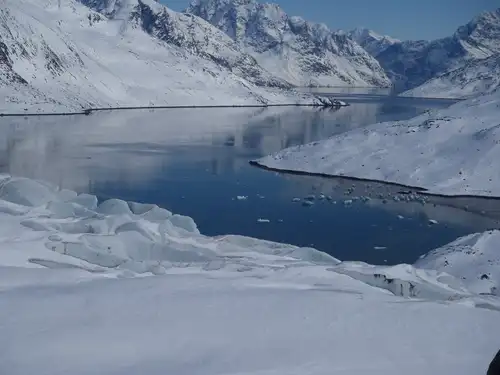
Blog
How and When Did Greenland Become Covered in Ice?
Although it may be hard to believe, there was a time when Greenland was more green than icy. Today, those who embark on a Greenland expedition are greeted with views of the Greenland ice sheet and the marine life that thrives in this region, including seals and whales. Polar bears are also prominent in the northern and eastern parts of Greenland. These animals have adapted to their environment, but a few million years ago, the massive island would not have been as welcoming to them.
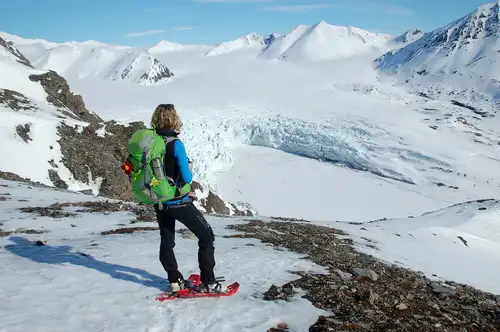
Blog
Arctic on Foot: Hiking and Snowshoeing the Far North
The focus of our voyages is always to get you off the ship and into the action as frequently as possible. While we travel from site to site on ice-strengthened vessels, our expeditions are crafted to provide you with the maximum firsthand experience of the polar regions and their unique wildlife.
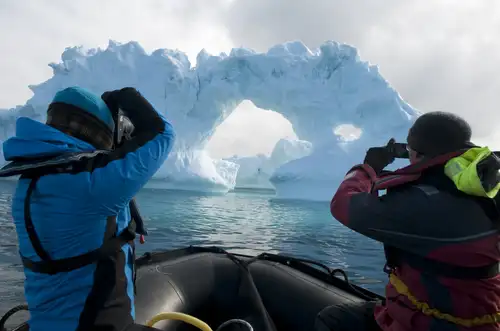
Blog
Under the Greenland Ice Sheet
Anyone who ventures to the right part of the globe can encounter vast amounts of ice, but a Greenland cruise offers something truly unique: ice sculptures hidden beneath the northern ice sheet. Scientists once thought these sculptures were rocky hills buried in ice, similar to the Ghost Mountains in Antarctica. However, it turns out that Mother Nature has crafted one of the most exclusive art exhibits in the world. These sculptures are not visible from the surface, but some scientists have managed to get a sneak peek using radar equipment.
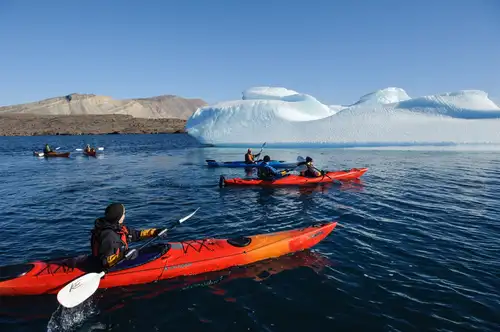
Blog
Greenland: Where the Kayak Was Invented
If you've ever enjoyed kayaking, you owe a debt of gratitude to the ancient Greenlandic Inuit who originally designed them for hunting. The thrilling adventures people now have navigating some of the world's most challenging rapids wouldn't be possible without the Inuit's need for a nimble form of water transportation. While travelers still use kayaks in this region, they are typically not fishing, whaling, or sealing. Consequently, recreational kayaks have been adapted to fit their new role.




